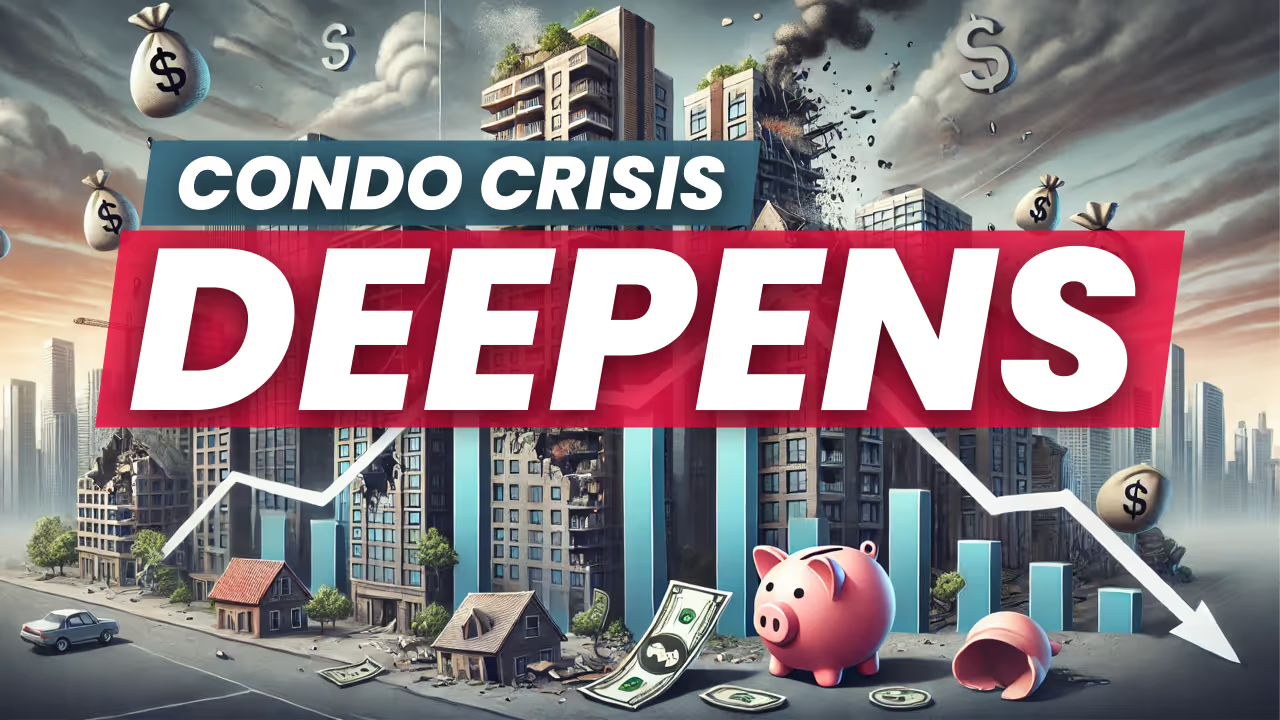


The Condo Crisis Deepens
Earlier this year, we posed a provocative question: Are we witnessing the demise of the condo model? At the time, signs were mounting - rising insurance costs, new regulatory burdens, financing hurdles, and a shrinking buyer pool. Now, recent reporting confirms what we’ve been seeing on the ground: the cracks in the condo model are deepening, and in some regions, the system is reaching a full-blown crisis point.
Prices Are Falling, And Fast
According to Redfin, the average U.S. condo price dropped2.2% year-over-year in May 2025 - the second-largest national decline since2012. In some hot spots in Florida, condo values have plunged over 30%. But, many other regions in the country are feeling the effects as well. Condos, once seen as the affordable entry point to homeownership, are losing their footing - especially in aging buildings burdened by deferred maintenance and mounting compliance costs. (Daily Mail: Condo prices record slide)
This aligns squarely with our earlier warning: when maintenance is ignored and reserves are underfunded, the result isn’t just higher assessments - it’s a collapse in property value.
Florida: Ground Zero for the Collapse
Florida is the cautionary tale everyone should be paying attention to. Following the tragic collapse of Champlain Towers South, new laws require structural inspections and reserve funding plans for older buildings. But compliance has been slow. Many boards are struggling to fund necessary repairs - leaving buyers, insurers, and lenders nervous.
The fallout? Ripple effects that have been felt across the country. Thousands of condos have hit the market at once, many with special assessments and skyrocketing HOA fees attached. According to Redfin, the condo market heavily favors buyers; there are 83% more condo sellers than buyers. By comparison, there are 28% more sellers than buyers in the single-family-home market. In addition, they list Florida as home to 4 of the top 5 largest imbalances of sellers to buyers – each well over 100% more. (Redfin: Sellers vs buyers)
To make matters worse, as of July, “CAI estimates 5,400condominium associations across the U.S. are currently on the Fannie Mae and Freddie Mac ineligible list (“Blacklist”), with an additional 100 to 300associations added each month.” (CAI: FNFA Meeting Update)
This dynamic - fewer qualified buyers, more listings, and higher costs - is pushing prices even lower.
The Financing Freeze Is Real
As predicted, financing has become one of the biggest hurdles in the condo market. Lenders are pulling back unless a community can demonstrate structural soundness and sufficient reserves - two things many older condos lack. This financing freeze is compounding the affordability issue. Even buyers willing to take on the risk often can’t secure a mortgage to make the purchase.
A Tale of Two Condo Markets
Despite the headlines, not all condos are suffering. Newer buildings with strong reserve funding, modern infrastructure, and proactive boards are still attracting buyers. The market is splitting: well-maintained, well-governed condos are thriving, while older, neglected communities are bleeding out.
The current downturn isn’t just about real estate trends - it’s about governance, maintenance, and sustainability. The headlines now reflect what we’ve been saying all along: the cost of neglect shows up in more than just special assessments - it shows up in plummeting values, stalled sales, and shattered trust.












